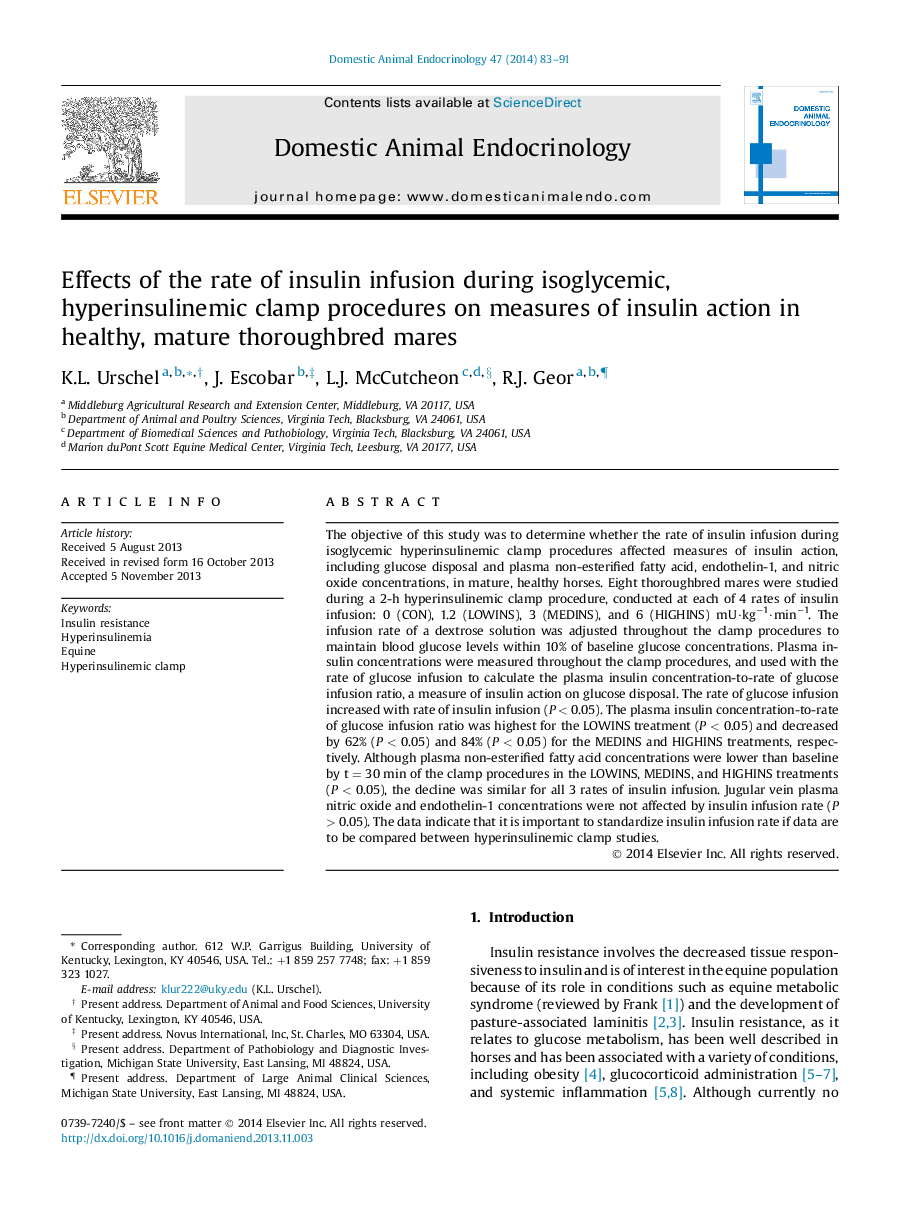| Article ID | Journal | Published Year | Pages | File Type |
|---|---|---|---|---|
| 2393515 | Domestic Animal Endocrinology | 2014 | 9 Pages |
The objective of this study was to determine whether the rate of insulin infusion during isoglycemic hyperinsulinemic clamp procedures affected measures of insulin action, including glucose disposal and plasma non-esterified fatty acid, endothelin-1, and nitric oxide concentrations, in mature, healthy horses. Eight thoroughbred mares were studied during a 2-h hyperinsulinemic clamp procedure, conducted at each of 4 rates of insulin infusion: 0 (CON), 1.2 (LOWINS), 3 (MEDINS), and 6 (HIGHINS) mU·kg−1·min−1. The infusion rate of a dextrose solution was adjusted throughout the clamp procedures to maintain blood glucose levels within 10% of baseline glucose concentrations. Plasma insulin concentrations were measured throughout the clamp procedures, and used with the rate of glucose infusion to calculate the plasma insulin concentration-to-rate of glucose infusion ratio, a measure of insulin action on glucose disposal. The rate of glucose infusion increased with rate of insulin infusion (P < 0.05). The plasma insulin concentration-to-rate of glucose infusion ratio was highest for the LOWINS treatment (P < 0.05) and decreased by 62% (P < 0.05) and 84% (P < 0.05) for the MEDINS and HIGHINS treatments, respectively. Although plasma non-esterified fatty acid concentrations were lower than baseline by t = 30 min of the clamp procedures in the LOWINS, MEDINS, and HIGHINS treatments (P < 0.05), the decline was similar for all 3 rates of insulin infusion. Jugular vein plasma nitric oxide and endothelin-1 concentrations were not affected by insulin infusion rate (P > 0.05). The data indicate that it is important to standardize insulin infusion rate if data are to be compared between hyperinsulinemic clamp studies.
